Luzie Meyer’s Cyclic Indirections
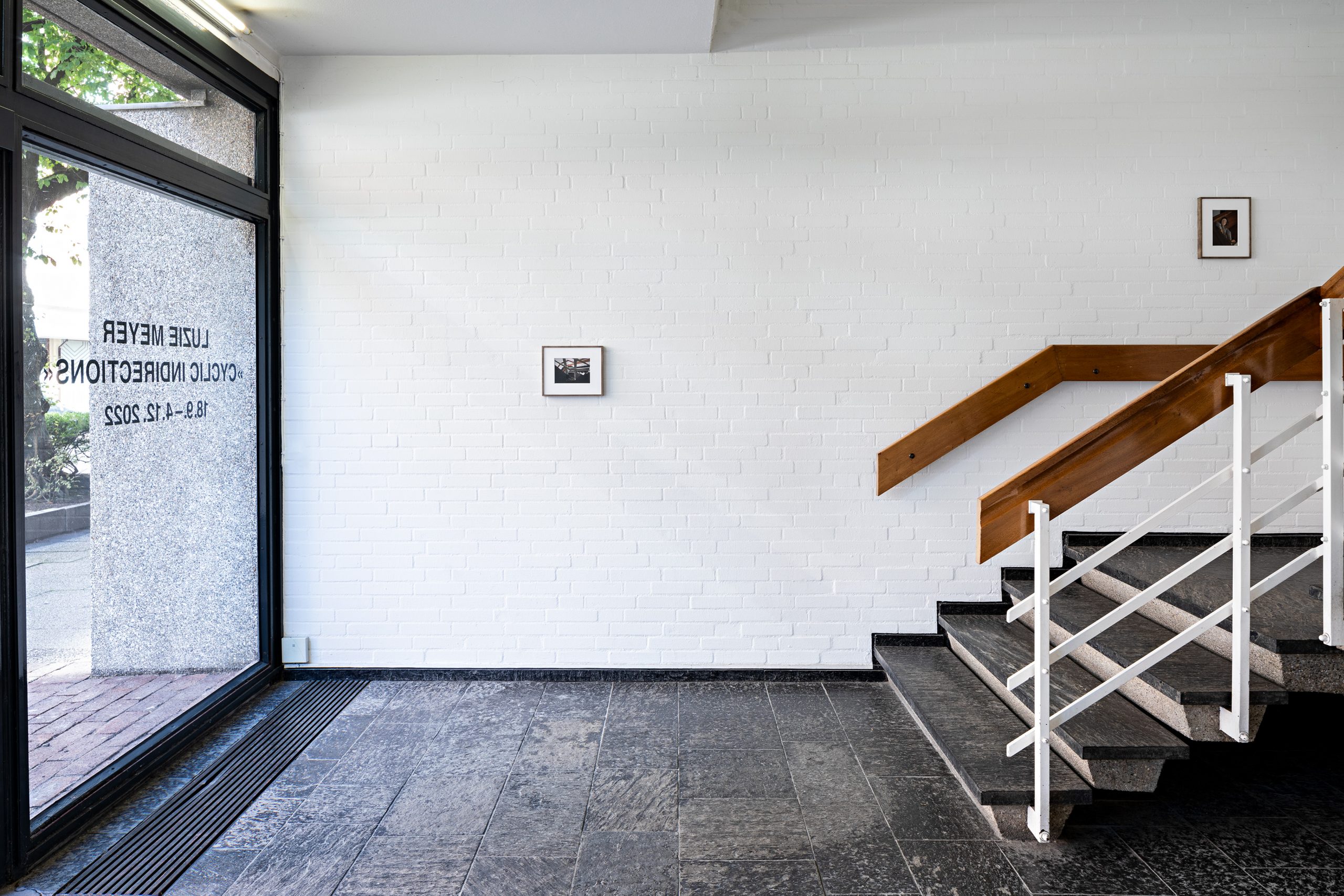
I first experienced Luzie Meyer’s work in 2019 at CACBM, an independent space run out of the rear of Galerie Crèvecoeur in Paris, where she performed Spilt milk is past recalling (2018), a humorous tale of spilled milk that uses a timed beat to sway and lead the reading. There was something in the nonchalant, ad hoc character of the work that drew me in—albeit the magnetism of its tongue-in-cheek philosophical references that alluded to something larger. Meyer works with film, video, photography, and performance to create visual gestalts in which the quality of the medium also defines the way the narrative is conceived. Feminist Marxist theory, literature, and film history infuse her practice with angles, perspectives, and “situatedness” as a means to an end: a way to visually document and simultaneously upend the model of the world as we know it.
Five years later, I’m excitedly engaging with Cyclic Indirections, the artist’s first institutional exhibition, held at the Kunsthalle Bremerhaven in northern Germany in 2022. The cyclopean show, which comprised two large-scale video installations and two series of photographs, addressed questions of orientation, or fitting into an alien society—a complex theme propelled forward through the metaphor of a lighthouse as “a normalizing structure.” Specifically, Meyer used the Simon Loschen lighthouse (1853–55)—the oldest land-based lighthouse on the coast of the North Sea—as a protagonist to radically contemplate the concept of orientation. The lighthouse, which is close to the Kunsthalle, typically stands as a beacon for navigational aid; it offers “orientation” for the people and things in its vicinity, as an object of both interpolation and proposed alignment. However, for this show, Meyer created a series of phenomenological and bodily exercises within the lighthouse that destabilize the very meaning of the subject at hand, proposing disorientation as a way to potentialize other forms of existence and of inhabiting the world.
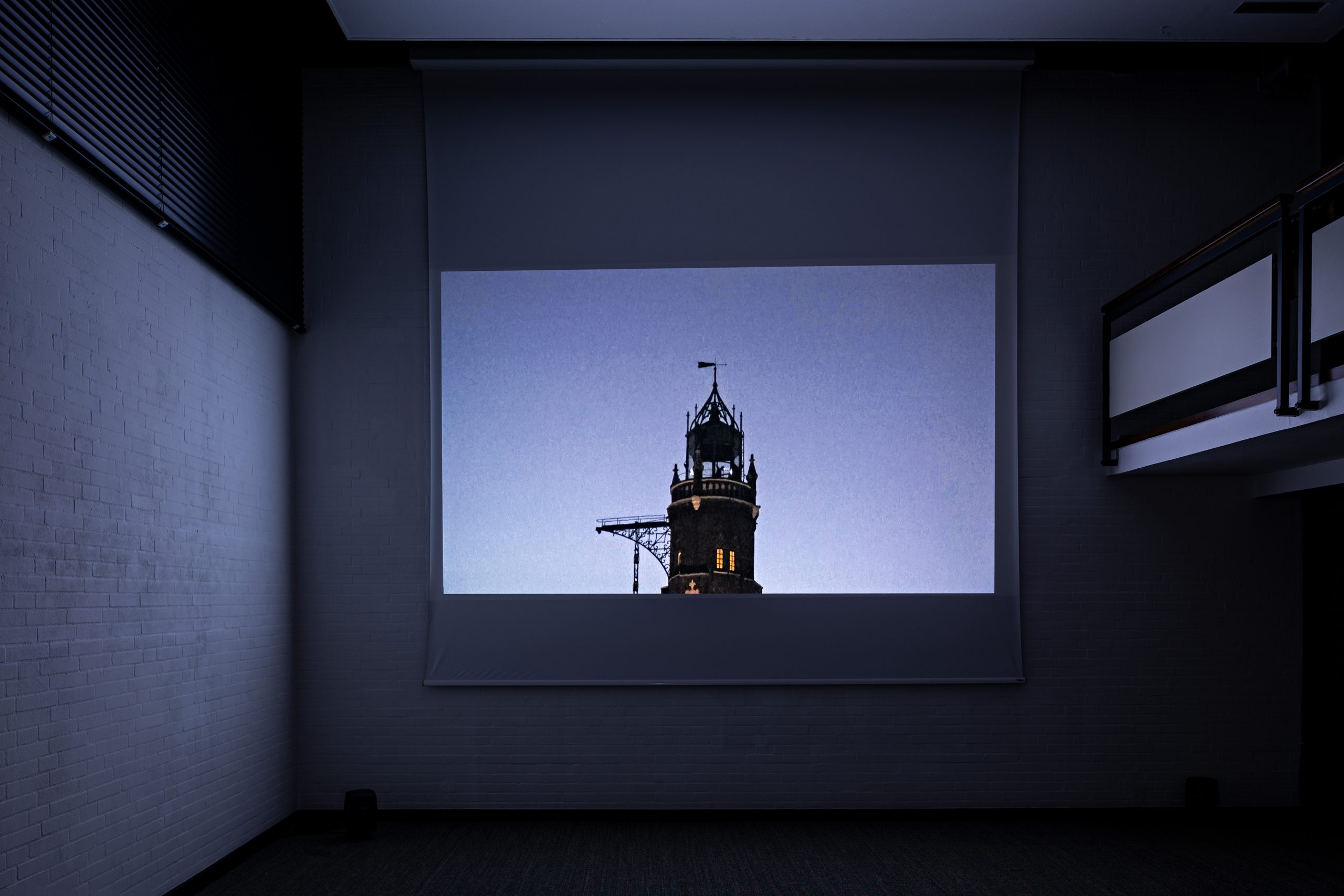
The central installation, Ground, Bound, Found (2022), exhibited in the main space of the Kunsthalle, consists of a three-channel video installation shot by Meyer with a handheld camera inside the lighthouse. In one video, the camera constantly rotates, capturing circular interior views of this clearly phallic structure alongside brief glimpses of Meyer as she picks up and tinkers with broken materials, including pipes, bricks, and wires. Although a sound recorder is also clearly visible in her hand, the sounds she captured have been reworked to create a rhythmic soundtrack vis-a-vis a chance-based musical score in the spirit of Delia Derbyshire and musique concrète. Moreover, the video projectors and speakers were installed on rotating plinths, creating a disorienting crisscrossing and intermixing of images and sound. Through this installation technique, Meyer extended the metaphor of the lighthouse not only within the work but also out into the institutional space itself—a meta trait, confounding the notion of the lighthouse and rendering it off-kilter.
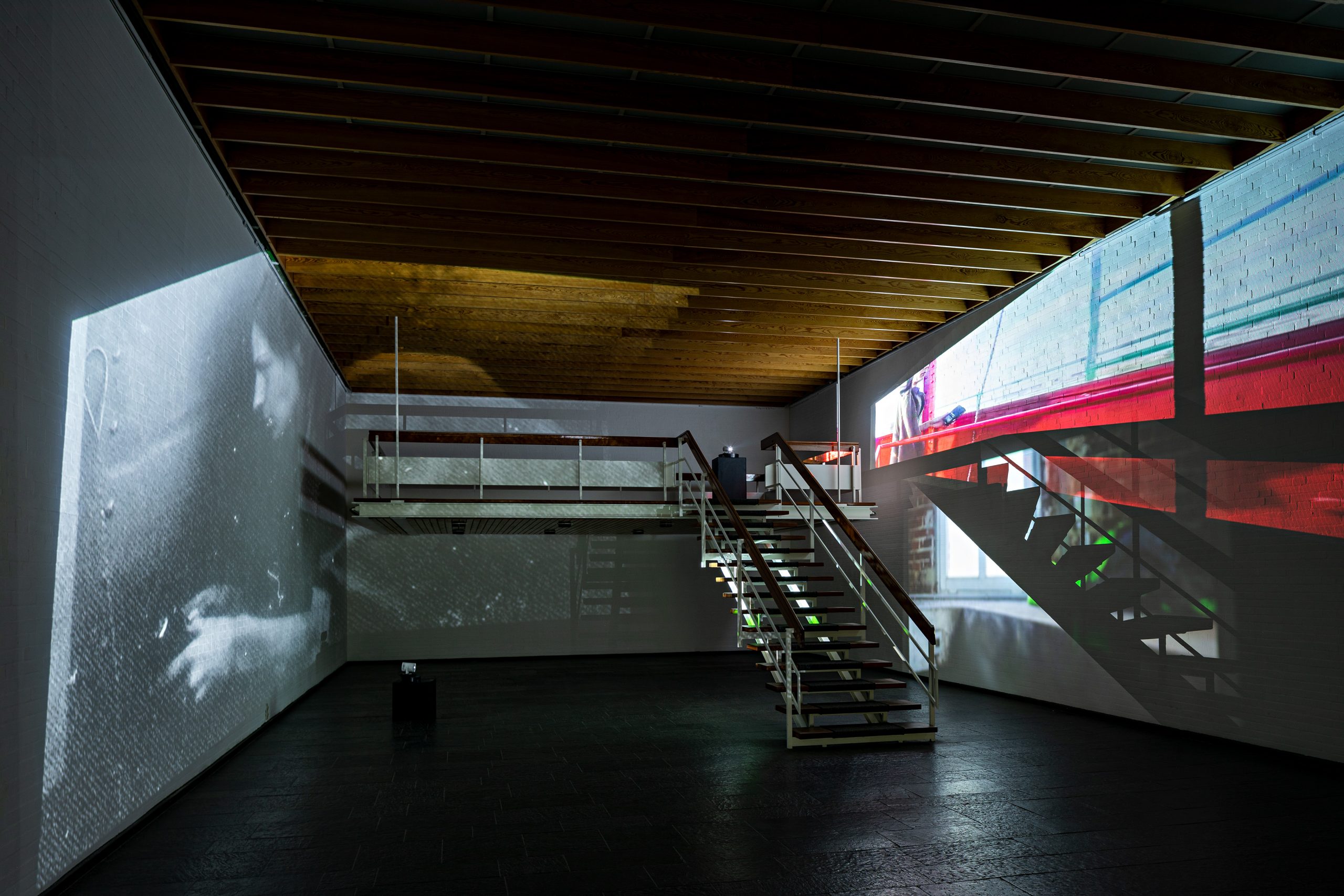
Installed upstairs, the eponymous video Cyclic Indirections (2022) layers recited texts and a series of mistranslations over a video of Meyer ascending the lighthouse. This time, the film has been shot from dusk to dawn and features an abstract narrative structure replete with references to bodily orientation, or “aligning oneself to the light,” as the artist is heard saying at one point. In the subtitles and audio track, Meyer interlaces paradigmatic phrases from Emily Dickinson, René Descartes, and Donna Haraway with poetic devices, or musings, based on mistranslations of herself in English and Stefanie Kleefeld, Director of the Kunsthalle, in German. One sequence extends to a nonsensical wordplay of phrases, which, combined with the visual motif, both references and inverts Marcel Duchamp’s Nude Descending a Staircase, No. 2 (1912).
nude descending a staircase
shrewd pretending a fair face
prude defending a spare trace
accrued decentering of air space
a mute, meandering stare’s chase
with an astute degenerate bare grace
eschewed the impending disrepair case
viewed the unbendingly rare place
construed as recommending the wares to erase
allude to offending the millionaire’s lace
subdued dependence on impaired base
crude intention to scare and abase
denuded extending the flair craze
acute engendering of a blare pace
The closer Meyer gets to the top of the lighthouse, the faster the tempo and the more blackouts that happen. In this, Meyer makes significant reference to the story of Odysseus and the blinding of Polyphemus in parallel to cinema history. Afterall, blinding light is disorientating, but at the end of the film, Meyer and the headlamp she’s wearing turn directly toward the camera, perhaps a final attempt at (re)orientation. The result is a whimsical oddening tale of ascension, or in the words of Meyer recited in the video, an “Aberration – aber – aber – aber – aber – aber.”
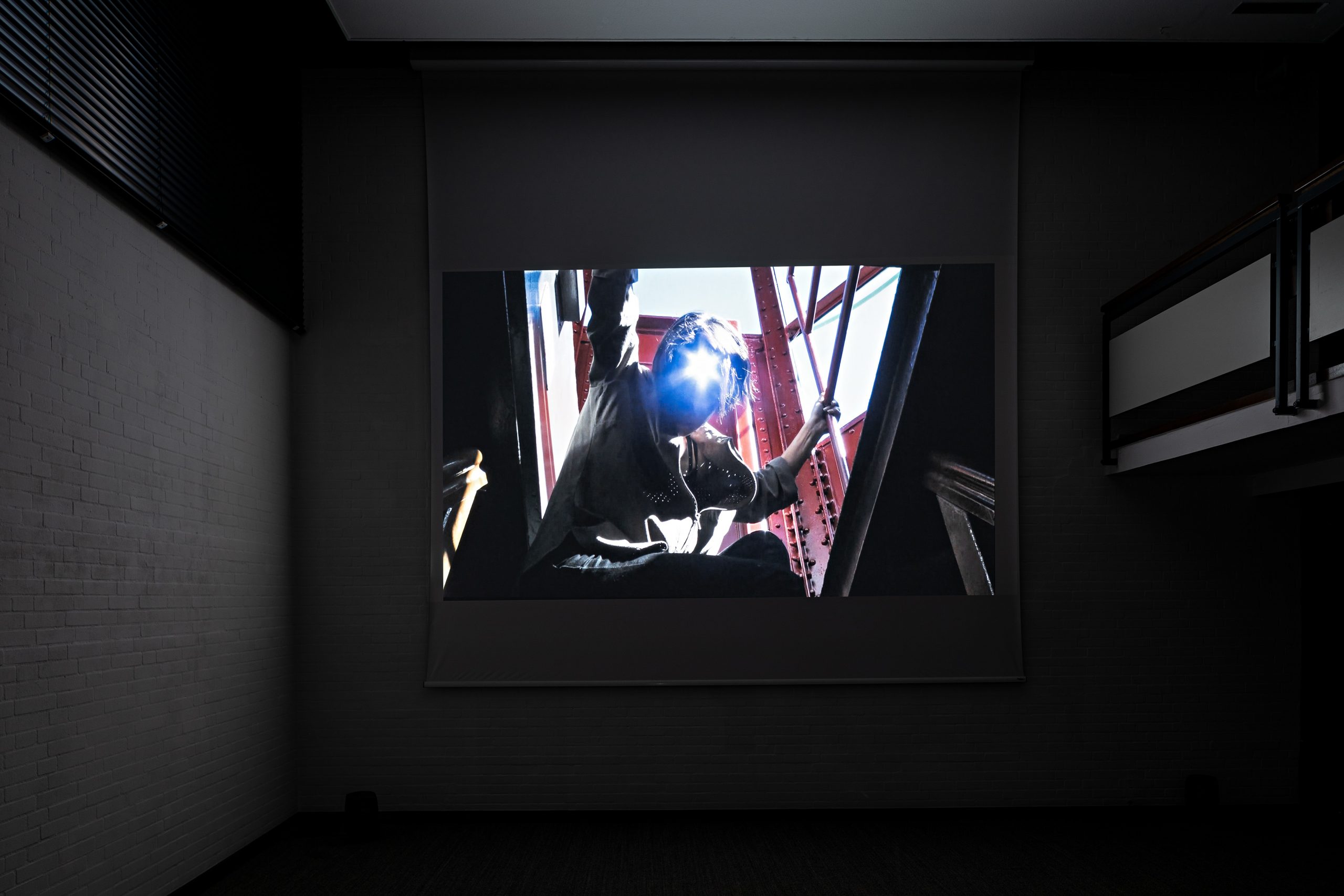
Throughout the exhibition, first-, second-, and third-person perspectives as well as photographs offering a bird’s eye view of the filming process mechanized the logic of Meyer’s works. Visitors were met at the base of the institution’s staircase with color photographs (each titled after a mistranslation) of Kleefeld directing a marionette of herself. Clad in a miniature version of the outfit Kleefeld wore to the exhibition opening, the marionette is shown predominantly within the staircase that visitors stood before, setting forth a self-reflexive institutional tone. At the top of the stairwell hung another set of photographs: black-and-white images taken by a woman who opened the lighthouse and documented Meyer’s process from an outside perspective. There is a subtle, improvised quality in the material, demarcating “an event” out of any immediate control and acting as a continuation of the overarching installation: “They open it up to something else; they refer to each other, face each other, but also interfere with each other,” as the exhibition text noted.
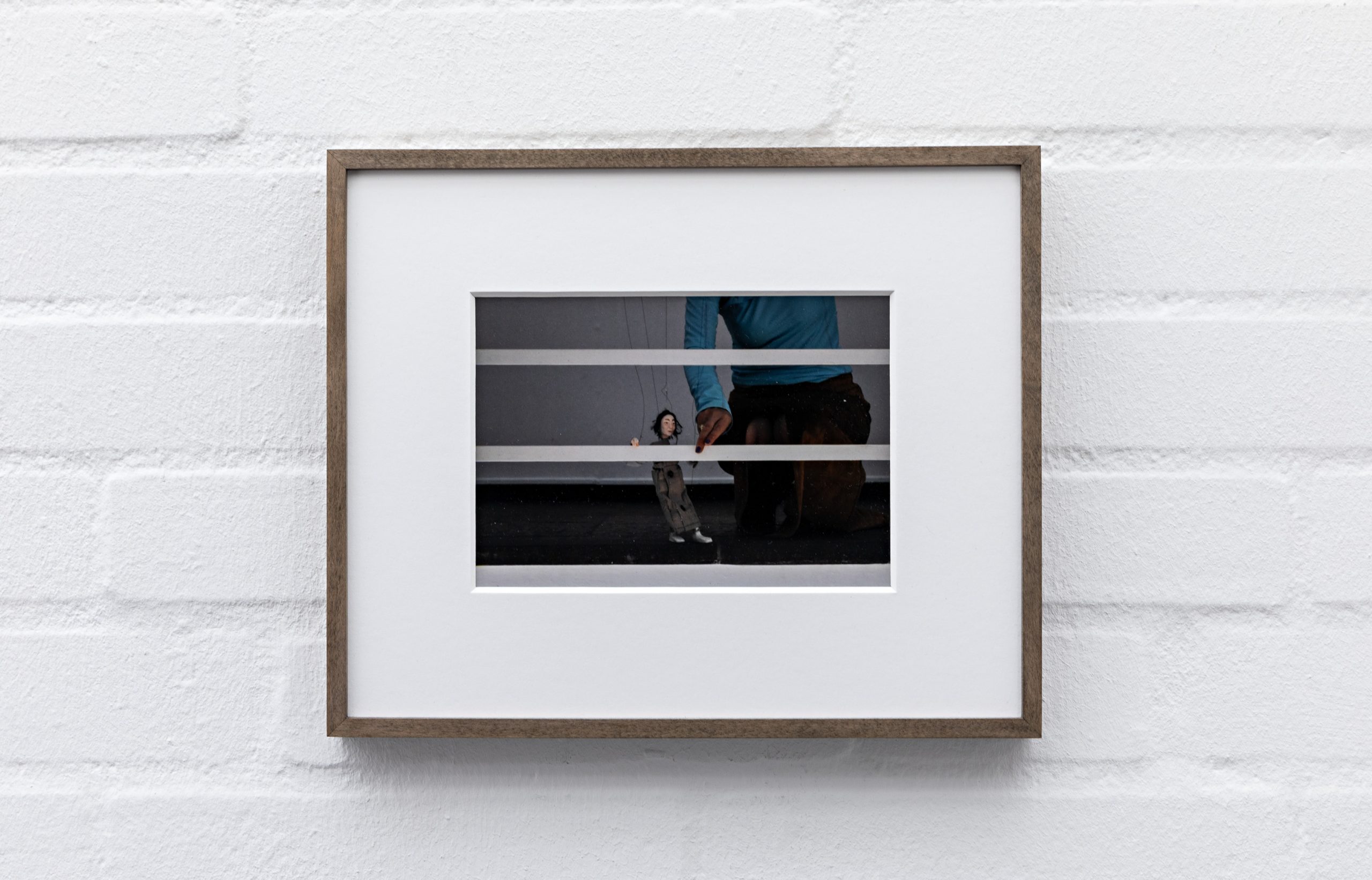
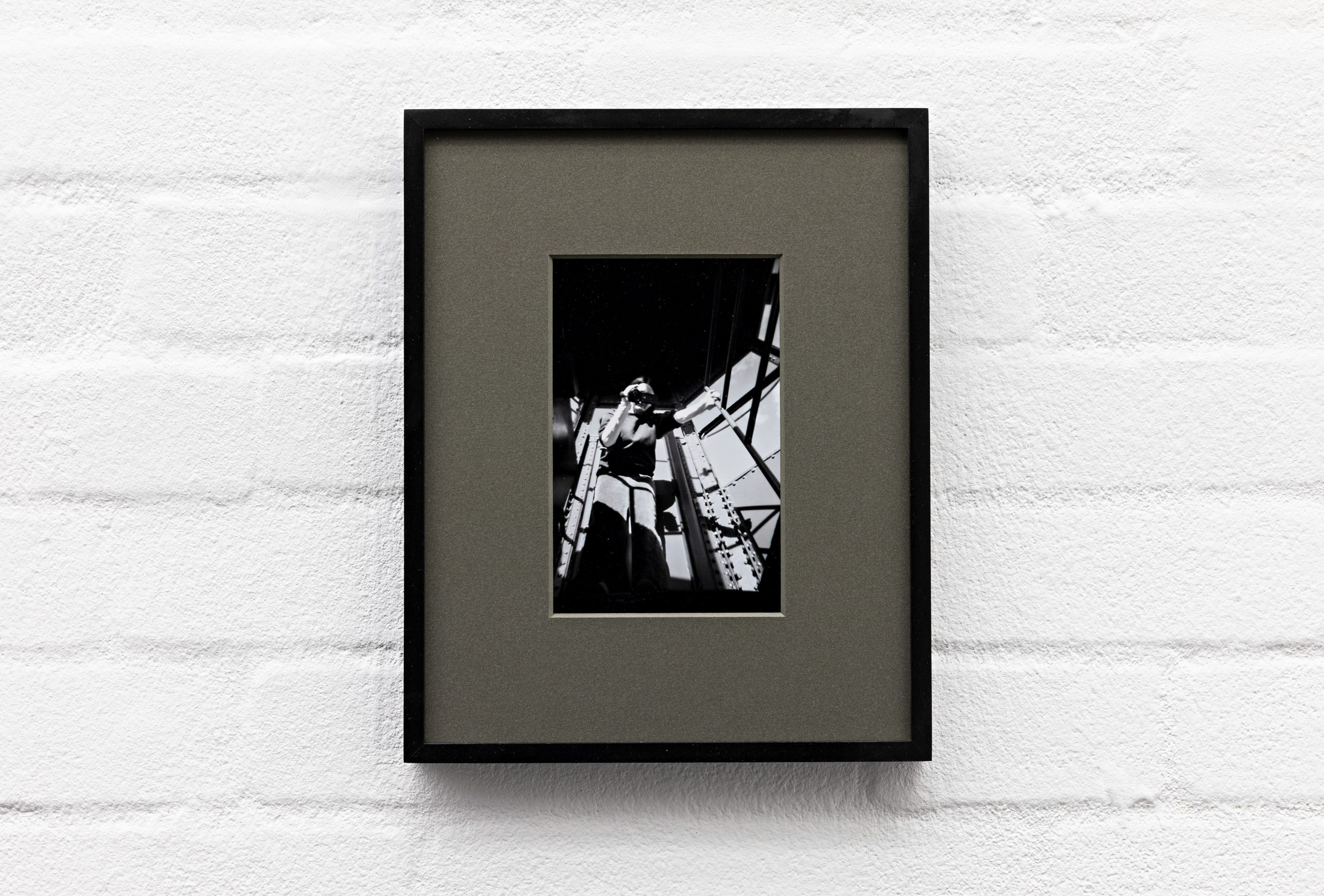
Cyclic Indirections was a far-reaching exhibition made with minimal means, successfully distorting and dissolving notions of direction and orientation. Needless to say, Meyer’s work is nurtured and underlined by feminist thinkers engaged in the organization of affects, or subjectively experienced feelings, with physiological, social, interpersonal, and internalized manifestations. One such thinker is Sara Ahmed and her seminal concept of queering phenomenology. In her analysis, Ahmed adopts philosopher Edmund Husserl’s oft-used phenomenological metaphor of the table as something that he orientates himself toward and which, in turn, dictates his orientation toward other objects. Ahmed takes this and then asks what happens when the very act of orientation becomes queer, suggesting that a study of phenomenology should not only consider what we are oriented toward but also how phenomenology itself serves as an orienting device.
Meyer, in this exhibition, extended Ahmed’s consideration to the work of Lauren Berlant, specifically to their portrayal of the American Dream as something that amounts to a condition wherein one’s object of desire actually prevents one’s flourishing—“a cruel optimism.” Both Berlant and Ahmed consider spheres of habituation, upbringing, and the ways that symbols and signals tell us how to orient ourselves in the world, and in Meyer’s works these concerns are met via their aesthetic counterparts. Seen together, the works in Cyclic Indirections stirred a politics of location, a form of situated dwelling, with the exhibition asking how bodies are contoured by circumstance and social arrangements—perhaps a redefined way of inhabiting space but also a means to address the world as a shared place.
Jennifer Teets is a Texas-born curator and writer based in Paris working at the intersection of science technology studies (STS), literature, cultural analysis, and the visual arts. She is editor of Electric Brine published by Archive Books in 2021. Currently she convenes Matter in Flux, a fifteen-member cohort dedicated to artistic inquiry, critical epistemological subjects, social justice, and new understandings of the body and political subjectivity with presentations by leading authors and theorists. In October 2023, she will open Intimate confession is a project, a large-scale group show centered on intimacy and infrastructure, at the Blaffer Art Museum, University of Houston. She regularly writes for periodicals and museum catalogs.